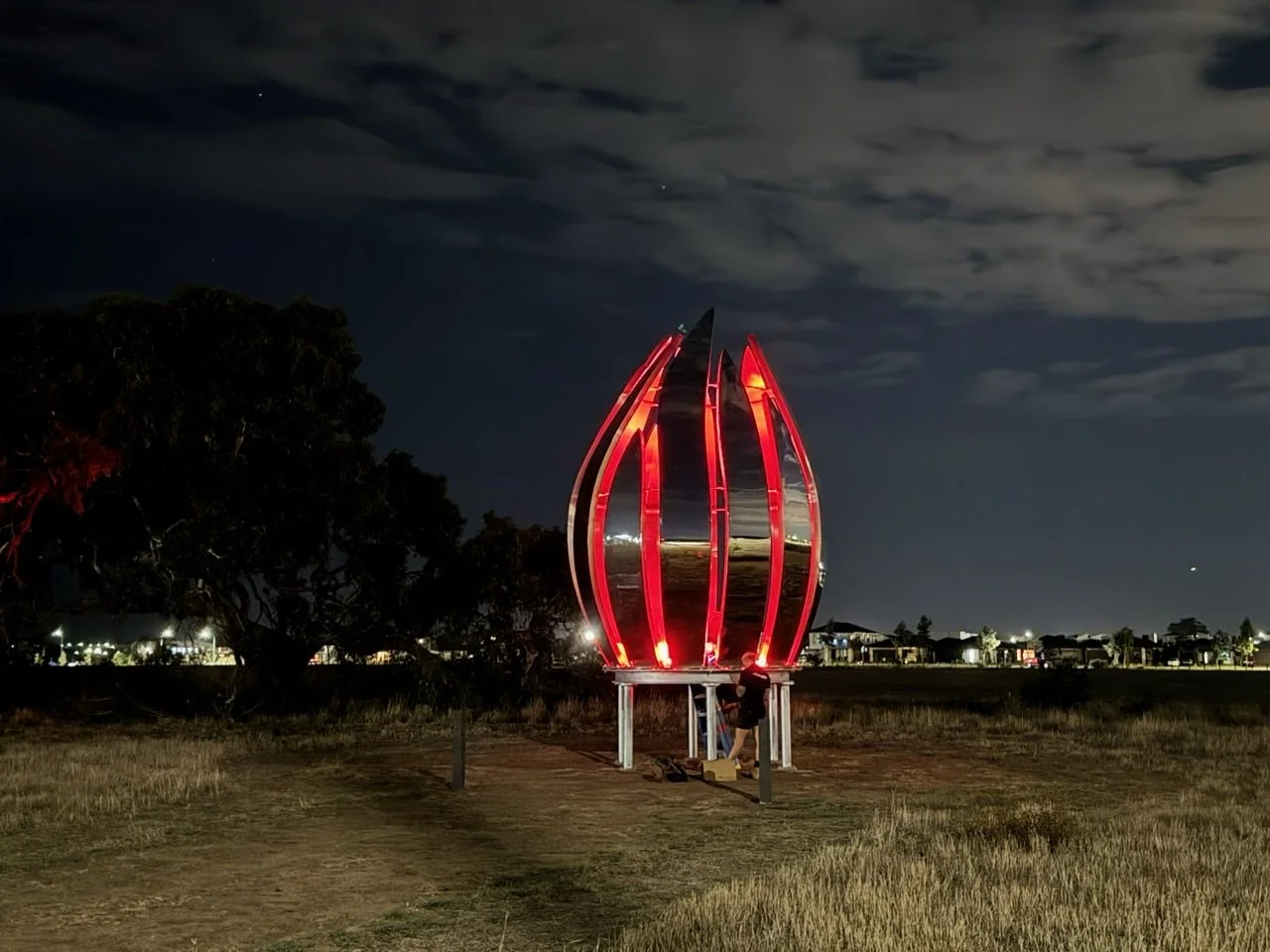About
Murrup Biik has successfully completed many public artworks over the past six years across Melbourne and overseas including sculptural works, interior design elements, murals, landscaping, projections, exhibitions, including associated education components and workshops. We have proven ability to deliver on contractual responsibilities and project milestones.
As a partnership we create public artworks with immersive, interactive and playful elements, ensuring that projects are people-centred, high in aesthetic richness, creating highly engaging interactions for visitors, and aiming for agency, identity and understanding. We are passionate story-tellers and truth-tellers, using a range of media and always site specific, honouring the stories of people and place. We are passionate about integrated and innovative story-building devices; and as a way of caring for Country, we are always interested in contributing to planting and landscaping plans.
“Our work is a spiritual act; a seeking through sensation, memory, emotion, the imagination, through slow gaze, quiet listening, tender touch. Here inspiration is drawn from the place where the inner and outer merge, finding ‘self’ as an interconnected part of the micro and macro. Avoiding objectifying, and more imploring than exploring, our work is a ceremony more than artistic statement.”
“The essence of Murrup Biik, as an Aboriginal person, is knowing that I come from Country and I am Country and that everything we do affects Country at all levels. It’s about deep listening, to hear what Country is saying to us.”
What we do
We work with a range of mediums and modalities:
installations
community art
landscaping
curation
interiors and exteriors
ephemeral and permanent
small and large scale
consultation
ceremony
interpretation and education
written narrative and concept development
Values
We value the promotion of healthy collaborative creative practice between Indigenous and non-Indigenous teams, as vital to respectful dialogue and conciliation.
We have valuable insights to share as a partnership, practising within the art and cultural sectors across all levels of government, with private enterprise and with NFP's, including experience with the following dynamics: racial and gendered 'othering' and exoticism, racial and gendered stereotyping, paternalism, reverse discrimination, racial and gendered 'eclipsing', The Matilda Effect in the Arts, the impacts of institutional policy box-ticking (often referred to as 'black-cladding' or 'white-washing'). We see this dialogue as vital to the education toolbox for anyone working with mixed cultural (and mixed gender) artistic partnerships and are happy to share our insights with you.
We understand your curiosity, and respect the challenges you might have to neatly pigeon-hole our projects and partnership, as we that often practice within a cultural framework but we are not totally Indigenous.
We are here to answer your questions and respond to your curiosity. We prefer to establish a mutually respectful working relationship from the get-go, and to avoid any misunderstanding, we may request a discussion and agreement with clients on these topics in preliminary conversations.
Murrup Biik actively mentors and supports young and emerging artists through their projects.
Philosophy
Our design work is committed to active philosophy of reciprocal relationship with Country which includes:
honouring and acknowledging Ancestors
honouring all things Country
holistic
holarchic rather than hierarchical
Country-centric as a priority rather than human-centric
telling the narrative of plants animals waterways, the layers of Country
working with the intangible
actively healing Country through our work
keeping cultural practice alive
bringing awareness to community
a political statement of Aboriginal survival
site-specific sensitivity
use of language and ceremony





